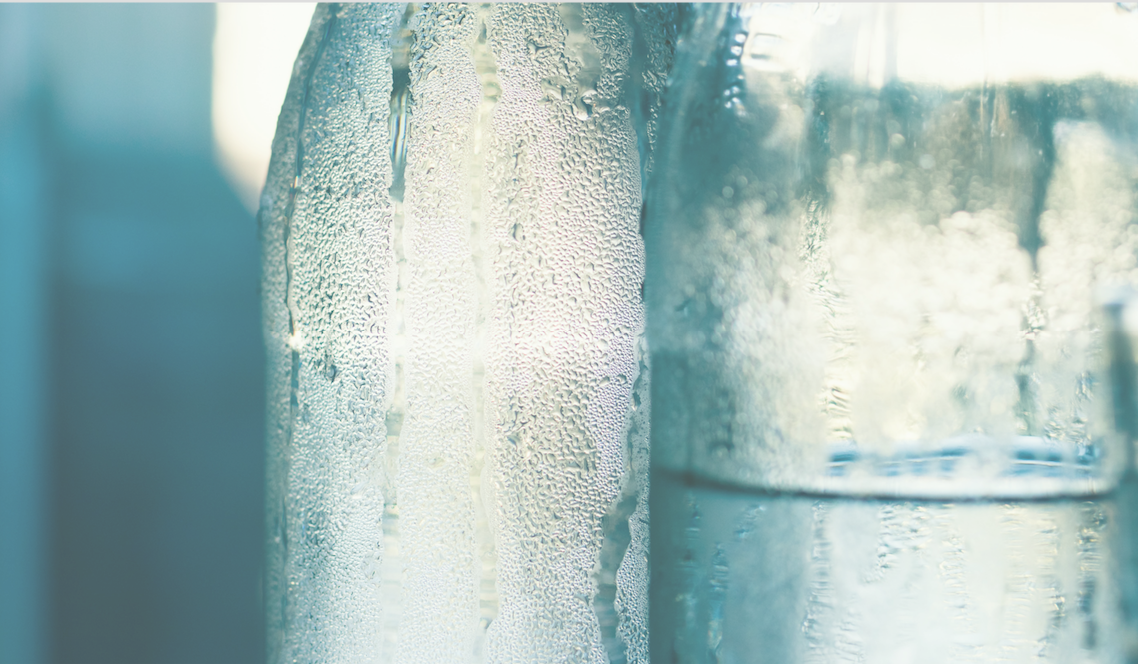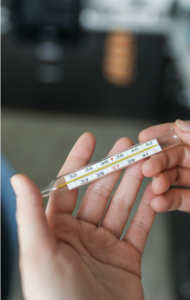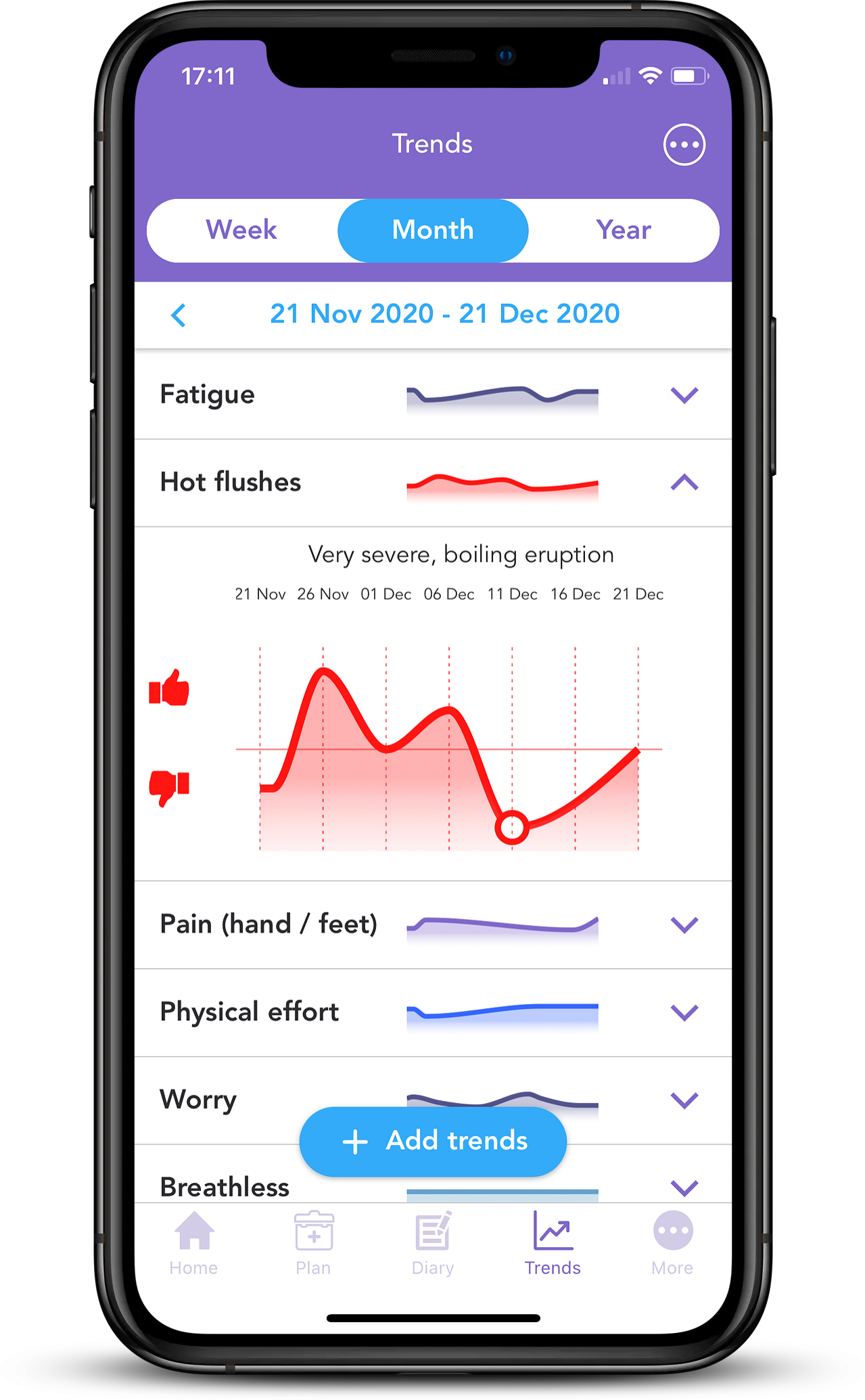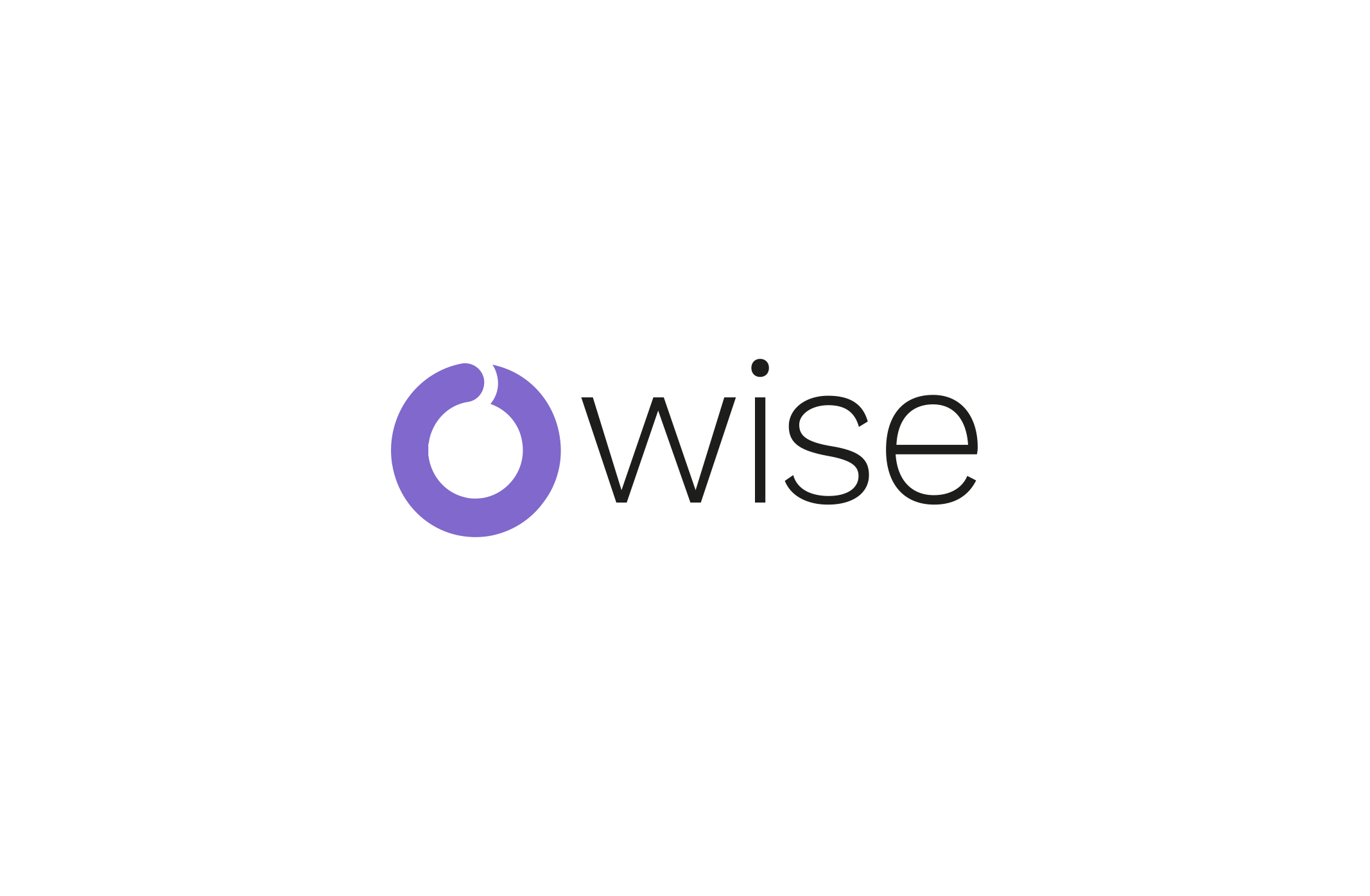
Hot flushes (aka hot flashes) are one of the most commonly reported menopausal side effects. Breast cancer treatments that are known to cause hot flushes include hormonal therapies (e.g. tamoxifen), chemotherapy and ovarian suppression or removal. Most women have hot flushes after breast cancer treatment because the treatment can lower the sex hormone oestrogen in the body.
“Hot flashes occur in approximately two-thirds of postmenopausal women with a history of breast cancer and are associated with night sweats in 44% of these women. In premenopausal breast cancer survivors, vasomotor symptoms—including hot flashes and night sweats—have been associated with depression, an effect that may be mediated by sleep disturbance” (National Cancer Institute)
In this blog, we will explore what may cause hot flushes, as well as how you can try and manage them. However, if you are finding that hot flushes are continually negatively impacting your life, it is very important to speak to your doctor about what they can do to help you.
What are hot flushes?
A hot flush is characterised by a sudden sensation of intense, internal heat in the chest, face and head, and this feeling may be accompanied by flushing, sweating and chills. However, they may not always be that intense for everybody and for some, hot flushes can be a mild warming sensation which just affects the face. The body’s reaction to hot flushes generally results not just in sweating, but also in an increased heart and metabolic rate1. Hot flushes usually last about 1-5 minutes, however, some can last as long as an hour2. Many people also get hot flushes at night, which can make it difficult to get a good night’s rest. In fact, disturbed sleep due to hot flushes can result in mood changes and feeling irritable, as well as having difficulty concentrating3, 4.
Who is more prone to hot flushes?
Hot flushes have been reported to occur in 51-81% of women with breast cancer3, 5, 6, and they can be a daily occurrence for many. Furthermore, approximately two out of three postmenopausal women with a history of breast cancer experience hot flushes3, 5, 6.
Research suggests that if you had hot flushes during your menopause you are more likely to have hot flushes as a side effect when you take tamoxifen as a breast cancer treatment.
The number of hot flushes you have and their severity is about the same with tamoxifen when compared with women going through a natural menopause4.
Interestingly, a US study with women of different races and ethnicities going through menopause found that hot flushes are most prevalent in women of African-American and Caucasian descent, and least prevalent in women of Chinese and Japanese descent7. However, more evidence is needed to confirm whether this is actually due to differences in underlying physiological processes, or if these are just differences in the interpretation or reporting of hot flushes between the ethnic groups1, 8.
What causes my hot flushes?
Hot flushes are thought to be an exaggerated response by the body to changes in temperature 10, 11.
 There is a process in the body called “thermoregulation” that regulates the body’s temperature and keeps it around 37 °C. For example, if your body is too hot and needs to cool down, your blood vessels will tend to increase in width, so that you can begin to sweat.
There is a process in the body called “thermoregulation” that regulates the body’s temperature and keeps it around 37 °C. For example, if your body is too hot and needs to cool down, your blood vessels will tend to increase in width, so that you can begin to sweat.
The process that regulates your body’s temperature can identify the extremes: when you are sweating (too hot) or when you are shivering (too cold). In women with hot flushes, this process is not as accurate, which generates exaggerated sweating or shivering responses12. In these women, only a small increase in their body temperature can result in a hot flush. A similar mechanism is thought to occur in men who suffer from hot flushes whilst on treatment, however, it has not been specifically studied yet1.
It is not yet known why this disruption in the system that regulates the body temperature occurs in menopausal women, however, studies have shown links to changes in some neurochemicals such as noradrenaline and serotonin1, 11 , and the sex hormone oestrogen.
A study investigating hot flushes from breast cancer treatment asked women to keep a log of the frequency and intensity of their hot flushes, as well as to write descriptions about them. The study reported that “Moderate hot flashes caused irritation, agitation, annoyance, fatigue, and embarrassment, and were memorable. One woman wrote that she felt the energy draining out through the bottom of her feet.” (Finck et al., 1998)
What are some tips to help me manage my hot flushes?
- Avoid your triggers
Everyone is different, so it may be helpful to keep a diary of what you were doing when a hot flush occurred so that you can identify triggers and patterns in your hot flushes. You can simply do this in the Notes section of the OWise app!
Some triggers may include:
- Caffeine
- Alcohol
- Hot Beverages
- Spicy foods
- Smoking and Nicotine
- Stress
- Hot baths and showers
- Hot rooms
Based on the demand of our users, we introduced the hot flushes trend to the OWise app for you to track and monitor your hot flushes accurately. This way, you can have a digital record of exactly how you felt and when allowing you to identify any factors that may be contributing to triggering a hot flush.
 2. Staying as cool as possible
2. Staying as cool as possible
- Dress in layers so that you can remove clothing when a flush begins.
- Wear loose-fitting and natural, airy fabrics such as cotton, silk, linen and rayon, as opposed to synthetic materials.
- Keep cold or iced drinks nearby to sip.
- Always keep a small fan (battery-operated if possible) at hand and a water spray to use on your face, chest and wrists to cool you down when needed.
- Have a lukewarm shower or bath instead of a hot one, and try to take a cool shower before bed.
- If you suffer from hot flushes at night, keep your room cool by having a large fan on.
- Try using a silk pillowcase, or keeping a frozen cold pack under your pillow and turning the pillow over often.
- Some companies make specially designed cooling pads, sheets, pillowcases, pillows and scarves that you may want to look into.
- Sleep on cotton sheets.
- Lay a towel down on your bed if you suffer from night sweats.
3. Diet and Exercise
- It has been shown that people who maintain a healthy body weight (BMI up to 27 kg/m2) tend to have fewer hot flushes12,13,14,15.
- Regular physical activity has been associated with decreased risk of hot flushes, as well as shorter overall duration of each hot flush14, 16,17,18,19. However, remember to go slow and don’t overdo it, as strenuous exercise can raise the core body temperature and may trigger a hot flush.
4. Reduce stress
- Try deep-breathing exercises when a hot flush starts.
- Practice stress-reduction techniques such as relaxation, meditation and mindfulness.
- Try to stay calm under pressure to prevent triggering a hot flush.
- Some of our users have told us how daily yoga has been helpful in the management of their hot flushes.
What treatments are available to manage hot flushes?
Many women suffering from menopausal symptoms, such as hot flushes, can simply be treated using hormone replacement therapy (HRT), which replaces the hormones that the body no longer produces (i.e. oestrogen). However, this is not usually recommended for people who have had a breast cancer diagnosis, especially if they have an ER+ breast cancer as there is uncertainty about whether HRT increases the risk of breast cancer coming back. Therefore, your doctor may recommend one of the following therapies:
- Antidepressants
Some antidepressant medicines can help to reduce the number and severity of hot flushes24, 25. Antidepressants that may be prescribed for hot flushes include:
- Venlafaxine
- Paroxetine (Not whilst on Tamoxifen)
- Fluoxetine (Not whilst on Tamoxifen)
- Citalopram
- Escitalopram
Certain antidepressants, such as paroxetine and fluoxetine have the ability to greatly reduce the effectiveness of Tamoxifen, therefore they should not be prescribed in conjunction with it. Check out our blog post on “Tamoxifen: what you should and shouldn’t avoid” for more information.
- Fezolinetant
Fezolinetant (Veozah®) is a non-hormonal drug that is the first neurokinin 3 (NK3) receptor antagonist approved to treat moderate to severe hot flashes from menopause37. It works by binding to and blocking the activities of the NK3 receptor, which plays a role in the brain’s regulation of body temperature. It was approved for use by the FDA in 2023, and has just been approved for use in the UK. It will be available in the UK from January 202437,39.
- Clonidine
Clonidine is a hypertensive drug that is used to treat a variety of conditions but is primarily used in the treatment of high blood pressure. In the treatment of hot flushes, it has been shown to reduce their frequency and can be prescribed as either a tablet or a wearable patch on the skin26, 27, 28. It works through the reduction of norepinephrine release, which increases the thermoneutral zone of the body12.
- Gabapentin and Pregabalin
These similar drugs are usually used to treat epilepsy, but can also help to reduce hot flushes12, 29, 30. They have been found to reduce both the severity of hot flushes and how long they last31, 32. Interestingly, it was by total accident that Gabapentin was first discovered to reduce hot flushes 12!
- Cognitive Behavioural Therapy (CBT)
Researchers have been looking into whether CBT can help in the management of hot flushes. CBT is a type of talking therapy which focuses on how your thoughts, beliefs and attitudes affect your feelings and behaviour, and aims to change how you respond to certain situations and emotions by providing you with coping skills. It combines cognitive therapy (examining the things you think) and behaviour therapy (examining the things you do) 33.
Some studies have found that CBT, even delivered in group or self-help format, can reduce hot flushes and night sweats in women34, 35. The reductions in hot flushes continued after therapy had ended, and helped women to have a better mood and quality of life.
- Be careful with alternative medicines
You may hear of some alternative medicines, such as black cohosh, helping to combat hot flushes. However, if you are on Tamoxifen, black cohosh, as well as other foods, drinks and herbal medicines, may reduce the drug’s effectiveness. Check out our blog post on “Tamoxifen: what you should and shouldn’t avoid” for more information. Always speak to your doctor before trying out alternative medicines.
We hope that you now better understand hot flushes and how to manage them. Our aim is to make sure you are always kept informed so make sure to follow our Instagram and Twitter accounts for any updates.
If you would like to start monitoring and tracking your hot flushes, you can download the FREE OWise app from the iOS App Store or Google Play Store.
Useful Links
Breast Cancer Now – https://breastcancernow.org/information-support/facing-breast-cancer/going-through-breast-cancer-treatment/hot-flushes-night-sweats
Menopause.org – https://www.menopause.org/for-women/menopauseflashes/menopause-symptoms-and-treatments/breast-cancer-survivors-hot-flash-treatments
References
- Fisher, W.I., Johnson, A.K., Elkins, G.R., Otte, J.L., Burns, D.S., Yu, M. and Carpenter, J.S., 2013. Risk factors, pathophysiology, and treatment of hot flashes in cancer. CA: a cancer journal for clinicians, 63(3), pp.167-192.
- Kronenberg, F., 1990. Hot flashes: epidemiology and physiology. Annals of the New York Academy of Sciences, 592, pp.52-86.
- Carpenter, J.S., Johnson, D.H., Wagner, L.J. and Andrykowski, M.A., 2007, February. Hot flashes and related outcomes in breast cancer survivors and matched comparison women. In Oncology nursing forum (Vol. 29, No. 3, pp. E16-E25). Oncology Nursing Society.
- Stein, K.D., Jacobsen, P.B., Hann, D.M., Greenberg, H. and Lyman, G., 2000. Impact of hot flashes on quality of life among postmenopausal women being treated for breast cancer. Journal of pain and symptom management, 19(6), pp.436-445.
- Harris, P.F., Remington, P.L., Trentham-Dietz, A., Allen, C.I. and Newcomb, P.A., 2002. Prevalence and treatment of menopausal symptoms among breast cancer survivors. Journal of Pain and Symptom Management, 23(6), pp.501-509.
- Morales, L., Neven, P., Timmerman, D., Christiaens, M.R., Vergote, I., Van Limbergen, E., Carbonez, A., Van Huffel, S., Ameye, L. and Paridaens, R., 2004. Acute effects of tamoxifen and third-generation aromatase inhibitors on menopausal symptoms of breast cancer patients. Anti-cancer drugs, 15(8), pp.753-760.
- Gold, E.B., Sternfeld, B., Kelsey, J.L., Brown, C., Mouton, C., Reame, N., Salamone, L. and Stellato, R., 2000. Relation of demographic and lifestyle factors to symptoms in a multi-racial/ethnic population of women 40–55 years of age. American journal of epidemiology, 152(5), pp.463-473.
- Grisso, J.A., Freeman, E.W., Maurin, E., Garcia‐Espana, B. and Berlin, J.A., 1999. Racial differences in menopause information and the experience of hot flashes. Journal of general internal medicine, 14(2), pp.98-103.
- Lobo, R.A., Kelsey, J. and Marcus, R. eds., 2000. Menopause: biology and pathobiology. Academic press.
- Freedman, R.R., 2001. Physiology of hot flashes. American Journal of Human Biology, 13(4), pp.453-464.
- Rossmanith, W.G. and Ruebberdt, W., 2009. What causes hot flushes? The neuroendocrine origin of vasomotor symptoms in the menopause. Gynecological Endocrinology, 25(5), pp.303-314.
- Freedman, R.R., 2014. Menopausal hot flashes: mechanisms, endocrinology, treatment. The Journal of steroid biochemistry and molecular biology, 142, pp.115-120.
- Whiteman, M.K., Staropoli, C.A., Langenberg, P.W., McCarter, R.J., Kjerulff, K.H. and Flaws, J.A., 2003. Smoking, body mass, and hot flashes in midlife women. Obstetrics & Gynecology, 101(2), pp.264-272.
- Gallicchio, L., Visvanathan, K., Miller, S.R., Babus, J., Lewis, L.M., Zacur, H. and Flaws, J.A., 2005. Body mass, estrogen levels, and hot flashes in midlife women. American journal of obstetrics and gynecology, 193(4), pp.1353-1360.
- Fisher, T.E. and Chervenak, J.L., 2012. Lifestyle alterations for the amelioration of hot flashes. Maturitas, 71(3), pp.217-220.
- Saccomani, S., Lui-Filho, J.F., Juliato, C.R., Gabiatti, J.R., Pedro, A.O. and Costa-Paiva, L., 2017. Does obesity increase the risk of hot flashes among midlife women?: a population-based study. Menopause, 24(9), pp.1065-1070.
- Hammar, M., And, G.B. and Lindgren, R., 1990. Does physical exercise influence the frequency of postmenopausal hot flushes?. Acta obstetricia et gynecologica Scandinavica, 69(5), pp.409-412.
- Ivarsson, T., Spetz, A.C. and Hammar, M., 1998. Physical exercise and vasomotor symptoms in postmenopausal women. Maturitas, 29(2), pp.139-146.
- Romani, W.A., Gallicchio, L. and Flaws, J.A., 2009. The association between physical activity and hot flash severity, frequency, and duration in mid‐life women. American Journal of Human Biology: The Official Journal of the Human Biology Association, 21(1), pp.127-129.
- Peng, N., Clark, J.T., Wei, C.C. and Wyss, J.M., 2003. Estrogen depletion increases blood pressure and hypothalamic norepinephrine in middle-aged spontaneously hypertensive rats. Hypertension, 41(5), pp.1164-1167.
- Brück, K. and Zeisberger, E., 1987. Adaptive changes in thermoregulation and their neuropharmacological basis. Pharmacology & therapeutics, 35(1-2), pp.163-215.
- Freedman, R.R. and Krell, W., 1999. Reduced thermoregulatory null zone in postmenopausal women with hot flashes. American journal of obstetrics and gynecology, 181(1), pp.66-70.
- Karim, R., Dang, H.M., Hodis, H.N., Stanczyk, F.Z., Brinton, R.D. and Mack, W.J., 2020. Association of hot flushes with ghrelin and adipokines in early versus late postmenopausal women. Menopause, 27(5), pp.512-518.
- Carroll, D.G. and Kelley, K.W., 2009. Use of antidepressants for management of hot flashes. Pharmacotherapy: The Journal of Human Pharmacology and Drug Therapy, 29(11), pp.1357-1374.
- Irarrázaval, M.O. and Gaete, L.G., 2016. Antidepressants agents in breast cancer patients using tamoxifen: review of basic and clinical evidence. Revista medica de Chile, 144(10), pp.1326-1335.
- Laufer, L.R., Erlik, Y., Meldrum, D.R. and Judd, H.L., 1982. Effect of clonidine on hot flashes in postmenopausal women. Obstetrics and gynecology, 60(5), pp.583-586.
- Goldberg, R.M., Loprinzi, C.L., O’Fallon, J.R., Veeder, M.H., Miser, A.W., Mailliard, J.A., Michalak, J.C., Dose, A.M., Rowland Jr, K.M. and Burnham, N.L., 1996. Transdermal clonidine for ameliorating tamoxifen-induced hot flashes. Journal of Clinical Oncology, 14(8), pp.2411-2411.
- Pandya, K.J., Raubertas, R.F., Flynn, P.J., Hynes, H.E., Rosenbluth, R.J., Kirshner, J.J., Pierce, H.I., Dragalin, V. and Morrow, G.R., 2000. Oral clonidine in postmenopausal patients with breast cancer experiencing tamoxifen-induced hot flashes: a University of Rochester Cancer Center Community Clinical Oncology Program study. Annals of Internal Medicine, 132(10), pp.788-793.
- Butt, D.A., Lock, M., Lewis, J.E., Ross, S. and Moineddin, R., 2008. Gabapentin for the treatment of menopausal hot flashes: a randomized controlled trial. Menopause, 15(2), pp.310-318.
- Loprinzi, C.L., Qin, R., Baclueva, E.P., Flynn, K.A., Rowland Jr, K.M., Graham, D.L., Erwin, N.K., Dakhil, S.R., Jurgens, D.J. and Burger, K.N., 2010. Phase III, randomized, double-blind, placebo-controlled evaluation of pregabalin for alleviating hot flashes, N07C1. Journal of clinical oncology, 28(4), p.641.
- Toulis, K.A., Tzellos, T., Kouvelas, D. and Goulis, D.G., 2009. Gabapentin for the treatment of hot flashes in women with natural or tamoxifen-induced menopause: a systematic review and meta-analysis. Clinical Therapeutics, 31(2), pp.221-235.
- Nguyen, M.L., 2013. The use of pregabalin in the treatment of hot flashes. Canadian Pharmacists Journal/Revue des Pharmaciens du Canada, 146(4), pp.193-196.
- Mind.org.uk. 2017. About CBT. [online] Available at: <https://www.mind.org.uk/information-support/drugs-and-treatments/cognitive-behavioural-therapy-cbt/about-cbt/> [Accessed 21 December 2020].
- Ayers, B., Smith, M., Hellier, J., Mann, E. and Hunter, M.S., 2012. Effectiveness of group and self-help cognitive behavior therapy in reducing problematic menopausal hot flushes and night sweats (MENOS 2): a randomized controlled trial. Menopause, 19(7), pp.749-759.
- Norton, S., Chilcot, J. and Hunter, M.S., 2014. Cognitive-behavior therapy for menopausal symptoms (hot flushes and night sweats): moderators and mediators of treatment effects. Menopause, 21(6), pp.574-578.
- Moon, Z., Hunter, M., Moss-Morris, R., Dawan Hughes, L. 2017. Factors related to the experience of menopausal symptoms in women prescribed tamoxifen. J Psychosom Obstet Gynaecol. 38(3), pp. 226-235.
- FDA US: FDA Approves Novel Drug to Treat Moderate to Severe Hot Flashes Caused by Menopause.https://www.fda.gov/news-events/press-announcements/fda-approves-novel-drug-treat-moderate-severe-hot-flashes-caused-menopause. [Accessed 13 May 2022].
- NICE UK : Fezolinetant for untreated vasomotor symptoms associated with the menopause [ID5071]. NICE.org. [Accessed 13 May 2023].
- Gregory, A. ‘Gamechanging’ drug to prevent hot flushes wins approval in the UK. The Guardian. Available at: https://www.theguardian.com/society/2023/dec/18/veoza-fezolinetant-menopause-drug-hot-flushes-wins-uk-approval
